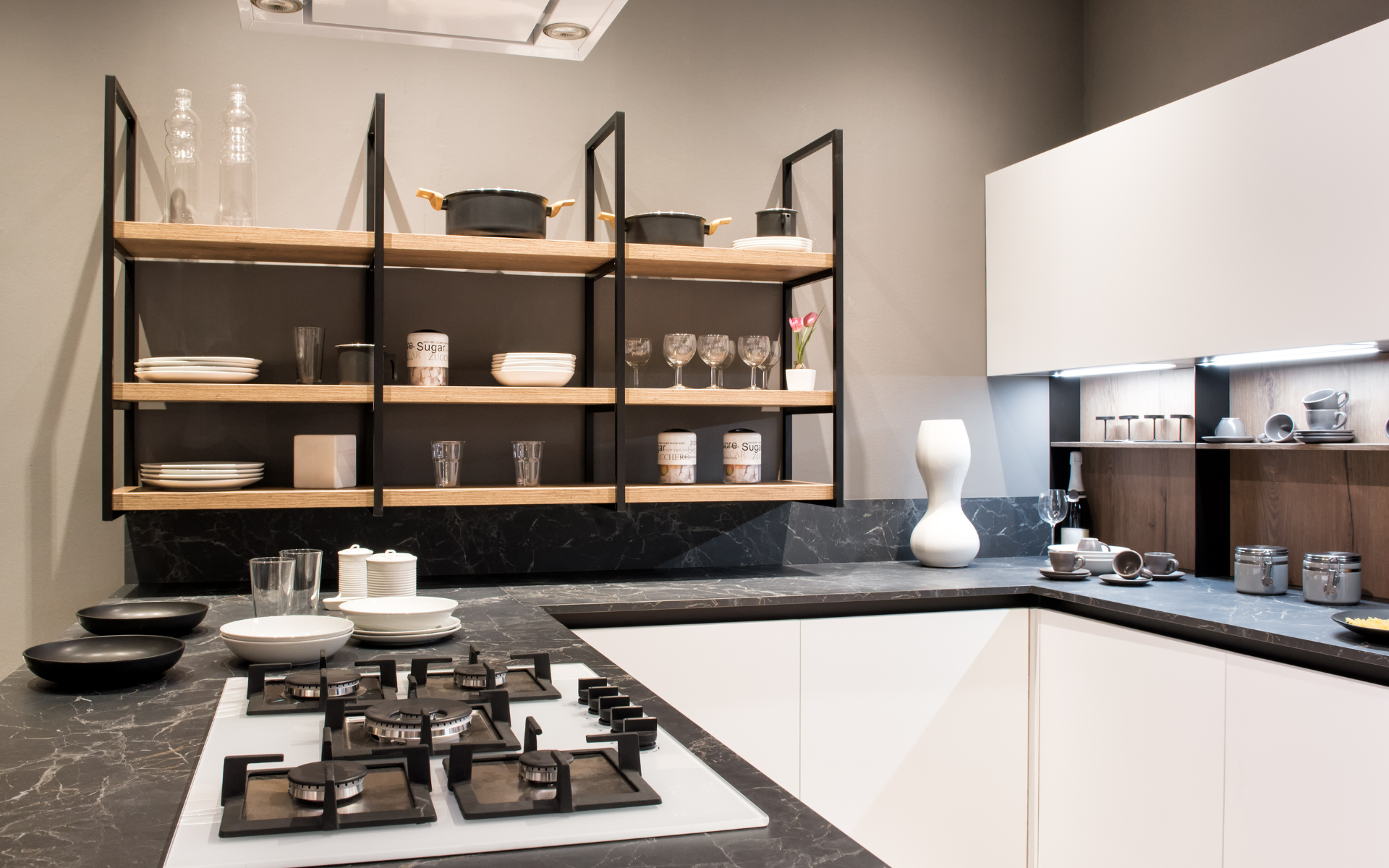
When talking about kitchens and baths, cabinets are a hot topic these days. More and more homeowners are considering ripping out their upper cabinets and replacing them entirely with open shelving. This design choice makes a statement, but is it the right one for your home? So, open shelving vs upper cabinets, which one would work for you? Well, there are good arguments on both sides. Let’s dive into the pros and cons so you can decide where you stand in this great kitchen debate.
Table of Contents
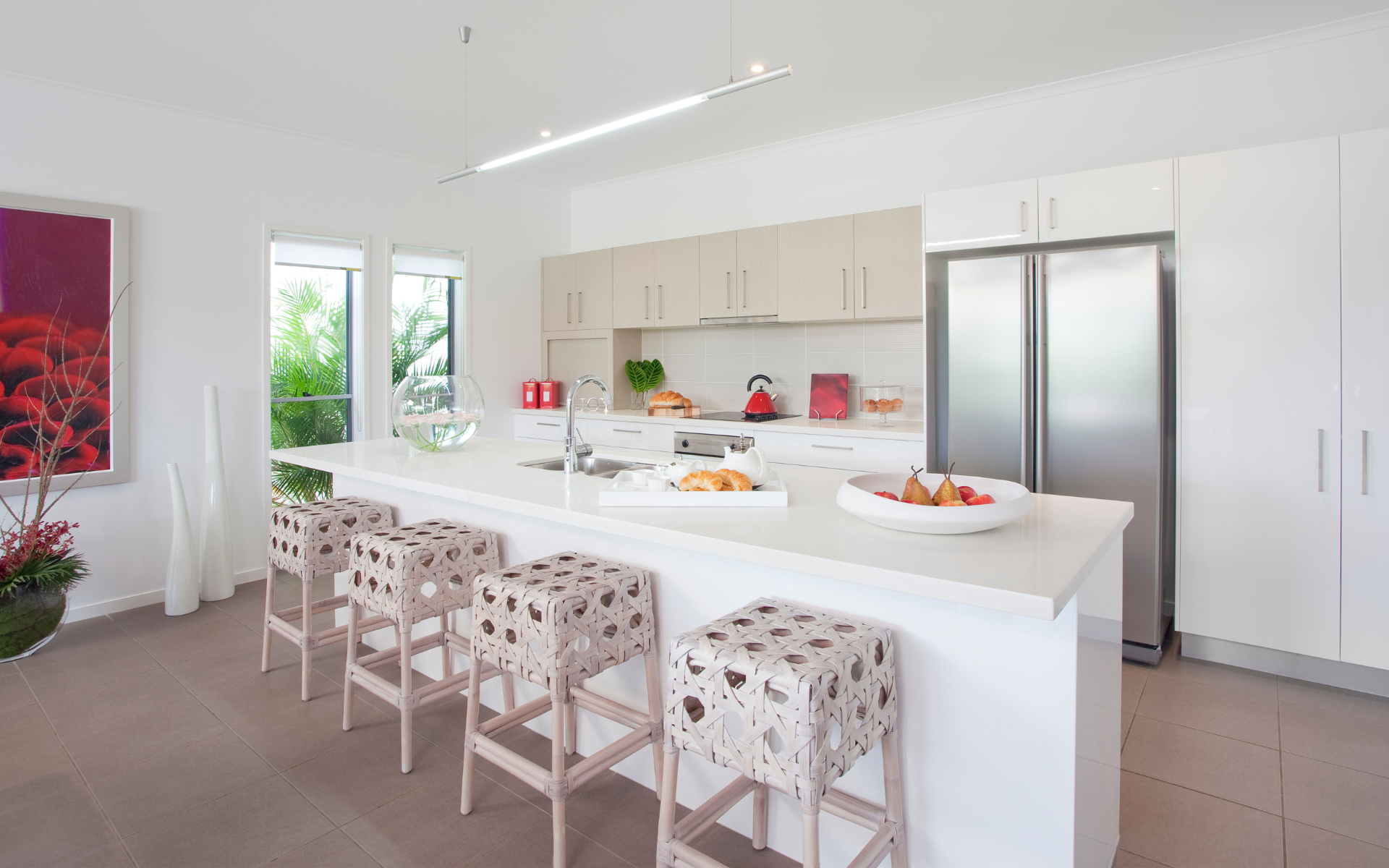
Upper Cabinets
Upper cabinets are storage cupboards mounted high up on kitchen walls, typically 15-18 inches below the ceiling. Usually 30-36 inches wide, they offer abundant contained storage space for dishes, glasses, bakeware, and other kitchen items. Upper cabinets provide a place to hide clutter but make kitchens feel darker and more closed in.
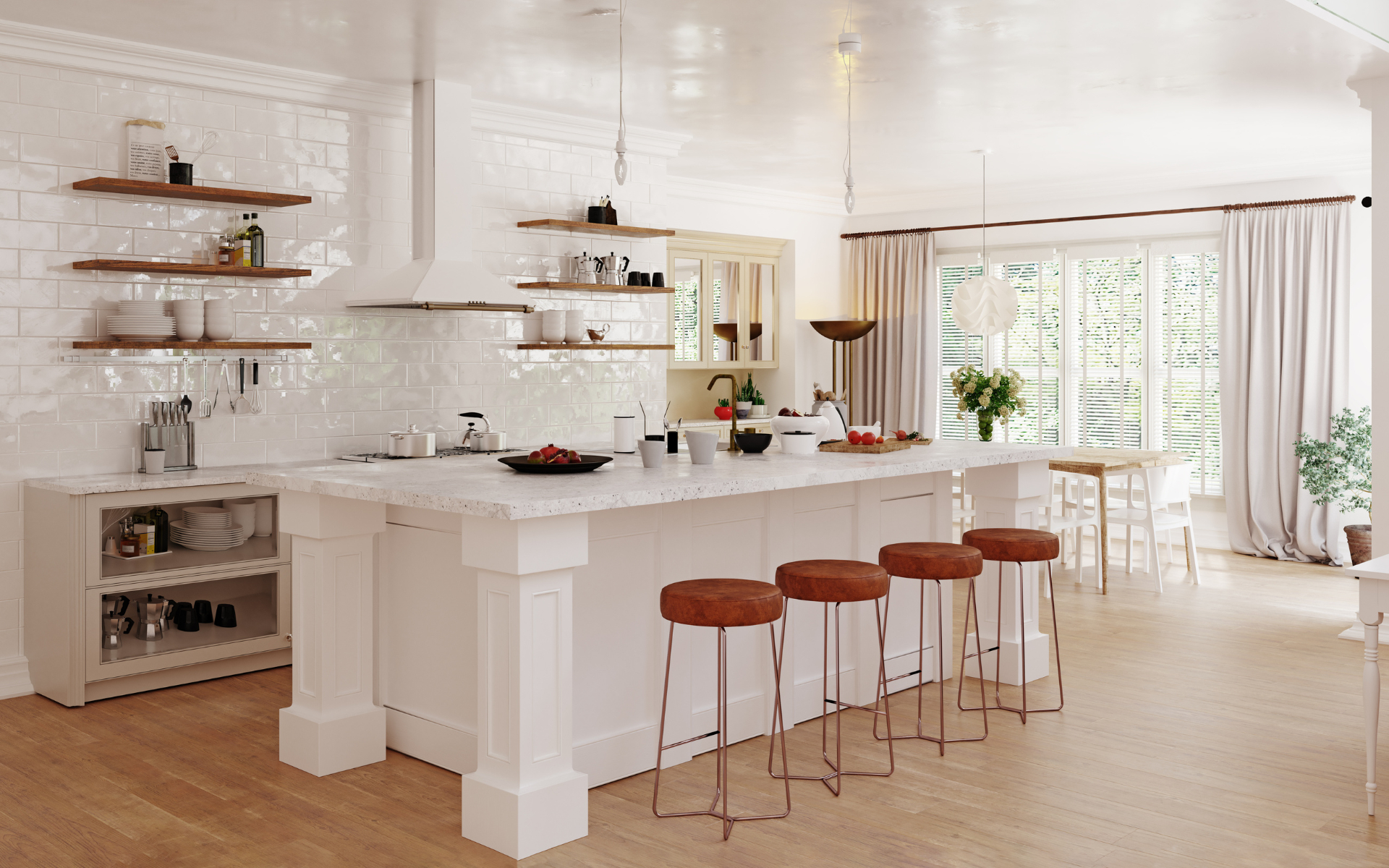
Open Shelving
Open shelving refers to open-faced shelves, typically made of wood, metal, or glass, that replace upper cabinets in kitchen design. Instead of storing items behind cabinet doors, everything is openly displayed in an organized fashion for aesthetic appeal. Open shelving offers a minimalist, airy look but sacrifices some storage space.
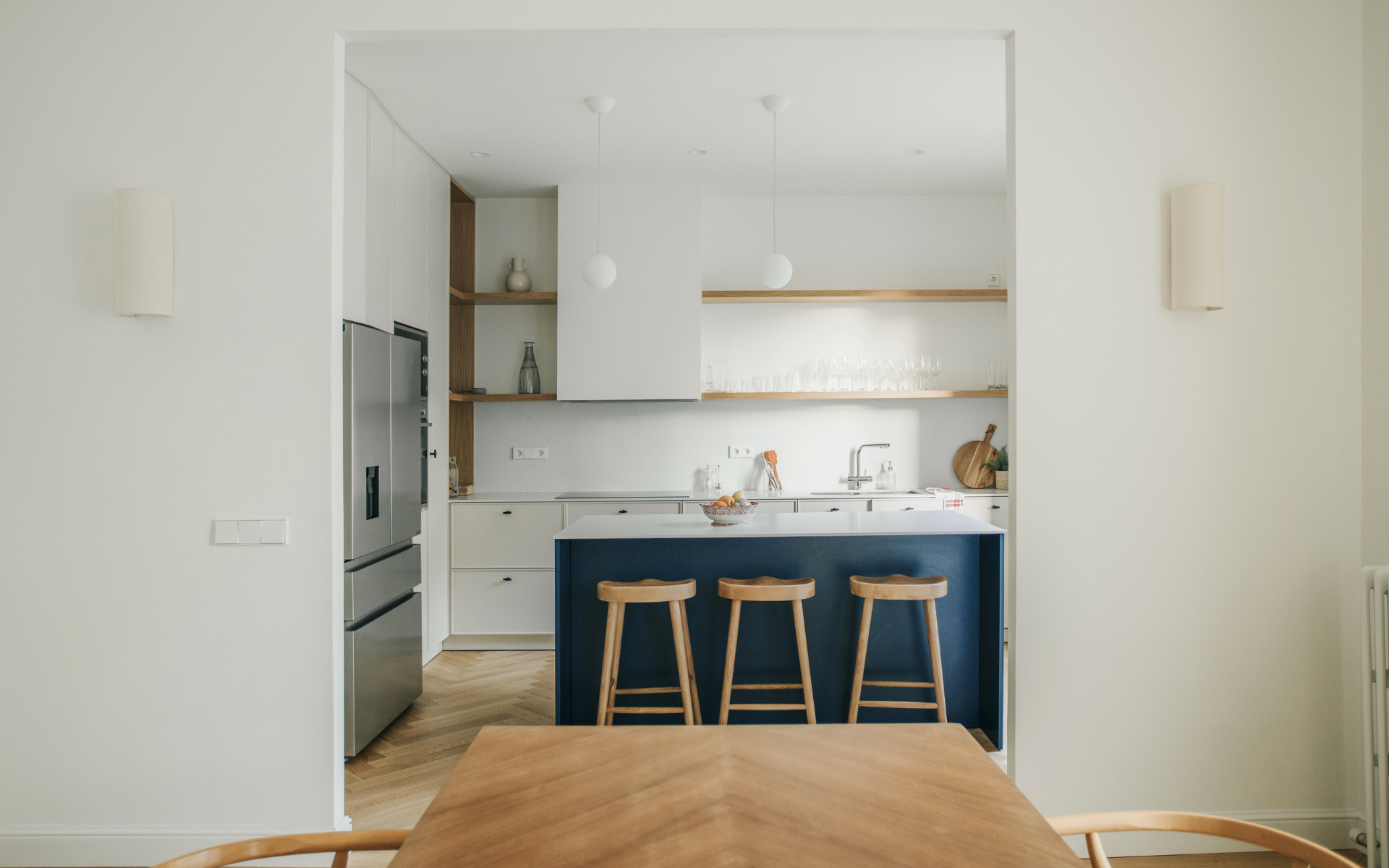
Pros
What is it about open shelving that creates such a stir amongst homeowners and designers alike? Here are some of the main attractions tempting homeowners to take the minimalism plunge:
It Feels Light and Airy
Upper cabinets can dominate a kitchen space with their brooding dark presence. Removing them opens things right up, creating a room that feels breezy and bright. The sunlight streaming in bounces around freely, no longer blocked by a row of imposing cabinetry. The space feels larger, making small kitchens appear more expansive.
It’s Eye-Catching
There is no doubt about it, open shelving draws the eye. It’s a stylish focal point that sets the tone for the whole room. Especially when styled with gorgeous raw wood shelves or rustic elements, open shelving evokes cozy farmhouse appeal. The carefully curated dishes and cookbooks attract attention and invite questions from guests.
It Showcases Your Stylish Kitchenware
Plates, mugs, and serving pieces are no longer doomed to hide behind closed doors. Feature your prettiest kitchenware in an artful formation, showing off your stellar design style and an enviable dish collection. Mix prints, textures, and colors for visual interest. Incorporate greenery for a splash of nature. Show off beautiful mugs on whimsical mug trees. Think visually balanced, asymmetrical arrangements.
It Promises a Clutter-Free Zone
The thought of going without upper cabinets is enough to stress even the most organized cooks. But fans of open shelving argue it promotes tidy kitchen habits. Without those handy cupboards to toss unused appliances and hide junk, you are forced to commit to a decluttered lifestyle. Edit ruthlessly and only display your most beautiful, functional items in styled vignettes.
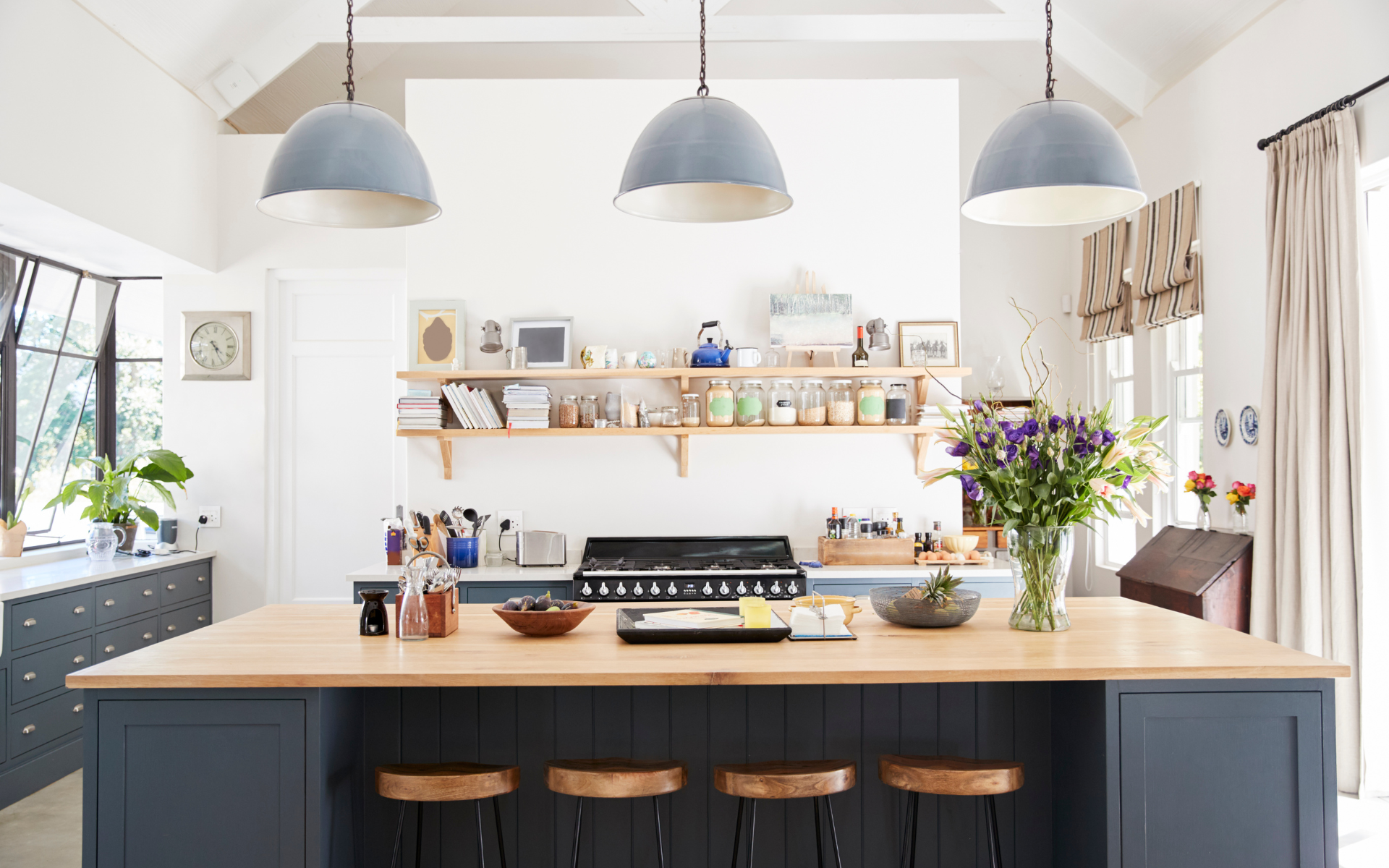
Cons
It all sounds dreamy, minimalistic design bliss, right? As with most hot debates, there are two sides to consider. Here are some potential cons to stacking open shelves in place of kitchen cabinets:
1. Less Storage Space
No matter how Marie Kondo-ed your kitchen, removing an entire upper row of storage is going to pinch space. Upper cabinets offer abundant storage in real estate, often 12-15 inches deep and 30-36 inches wide. Carefully measure your expected shelving area and assess if it will meet your household’s storage needs before abandoning your uppers. Could you make up space with a pantry or extra cabinetry/drawers elsewhere?
2. More Visible Dust and Grease
Open shelves show it all, and that includes dust, splatters, drips, and spills. The lack of cabinet doors allows cooking messes to spread freely. Be prepared to commit to an almost daily wipe-down to keep your open shelves looking photo-ready. For the busy cooks and messy bakers among us, this could be annoying. Strategically place most used items on lower shelves for easy access and cleaning.
3. Tricky Design Choices
You only get one shot to get your open shelving right so the planning stage is key. Factor in these considerations before you demo:
- What look are you going for – modern, industrial, rustic? Make sure your design choices align.
- What shelf materials make the most sense – iron, wood, glass, etc? Consider budget, cleaning needs, and weight capacity.
- How far apart should shelves be placed while still fitting most of your items? Pull everything out and measure accordingly, keeping 15 inches between shelves as a guide.
- How will you make up for lost storage space creatively elsewhere?
- Will you incorporate any closed storage or leave everything open? Glass door uppers maintain the airy aesthetic while hiding less attractive items.
4. Potential for Clutter
This con goes hand-in-hand with the lost storage space issue. When prime real estate storage spots are removed from a kitchen, the clutter has to go somewhere. If other storage nooks aren’t sorted out, it’s going to end up on the open shelves, destroying that gorgeous, airy aesthetic. Strategically place everyday dishware on shelves while hiding specialty items you use less often in closed drawers or cabinets. Stay disciplined about what makes the shelf cut.
Making Open Shelving Work in Your Kitchen
A design expert from HGTV outlines the advantages, placement guides, and style considerations around open kitchen shelving.
If done right, open shelving brings design charm and functional work space to a kitchen. Follow these tips to give yourself the best shot at open shelving success:
Edit Ruthlessly
Be prepared to part with anything non-essential or not kitchen-related. No power tools, paint cans, or holiday platters are allowed to take up valuable real estate. If you can’t display it in a Pinterest-worthy vignette, it must go. Stick to items you use often and are lovely enough to show off.
Mind the Gaps
Leave breathing room between shelves to prevent a crowded, cluttered look. About 15 inches of space allows you to easily grab items without knocking into things above. It also prevents dust build-up and preserves visibility to the back.
Vary Materials
Consider mixing up materials for visual interest. Iron shelves above the stove echo the industrial range hood. Rustic wood shelves near an exposed brick wall play up the textures. Glass shelving maintains visibility while metal brings modern flair.
Remember Some Closed Storage
It doesn’t have to be all or nothing when it comes to open shelving. Even shelf fanatics can designate one or two upper cabinets for necessities like small appliances. Just because the main shelving is gorgeous doesn’t mean everything must be on display. Sometimes a little hidden storage preserves the gorgeous styling.
Lighten Wall Colours
Paint upper walls, ceilings, and remaining cabinets in light icy tones to enhance the airy, light aesthetic. It also makes hand-crafted wood shelving pop beautifully. Save the drama for accent walls or kitchen islands.
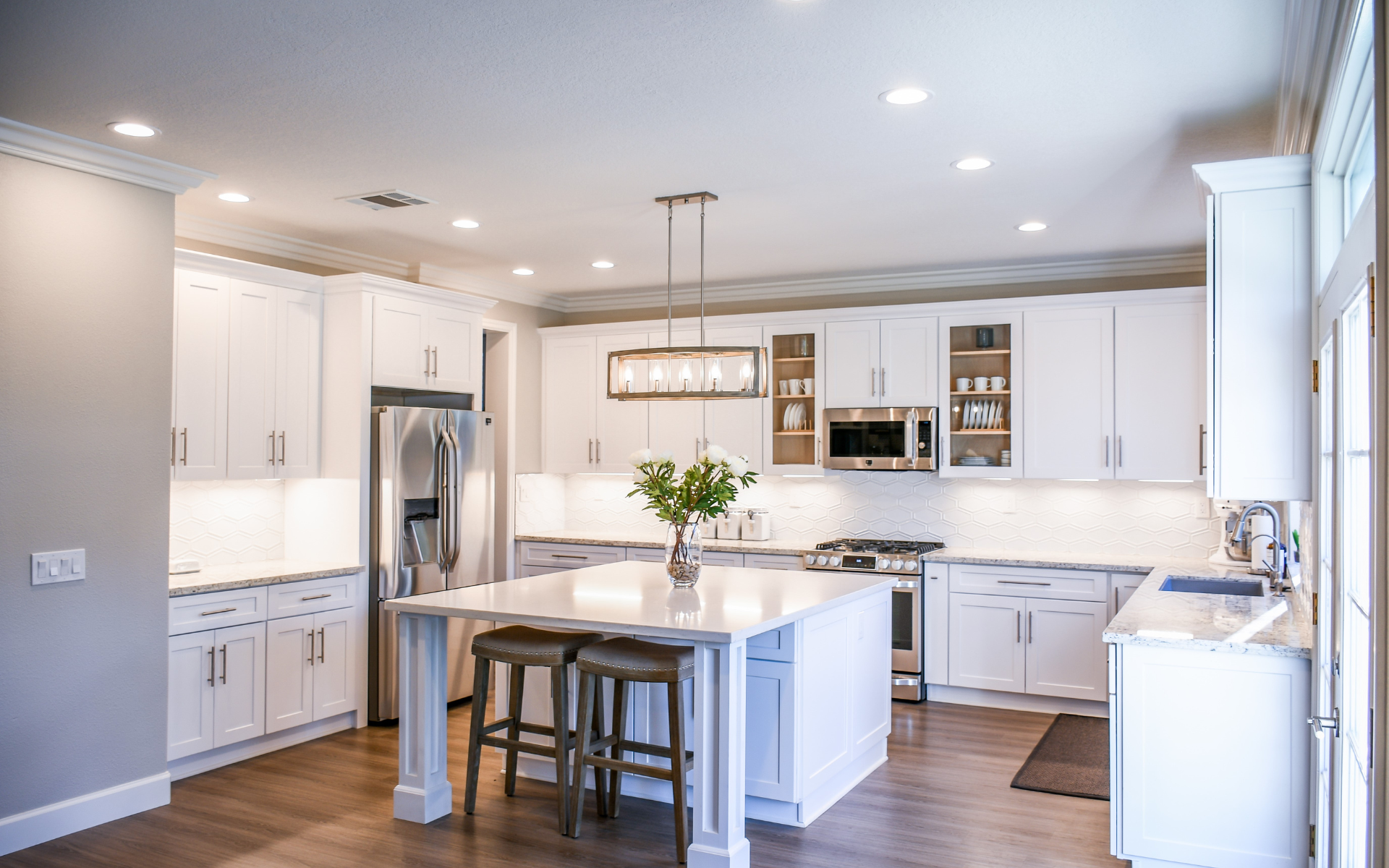
The Case for Keeping Upper Cabinets
While the minimalist magic of open shelving is allure, upper cabinets still offer functional benefits to households that should not be dismissed. Here’s why they deserve some defense.
Abundant Storage Capacity
The expansive and contained storage space upper cabinets provide cannot be overstated. With cabinet depths ranging from 12-24 inches and widths reaching up to 36 inches, they simply offer more cubic footage of storage than slender open ledges.
Added Surface Area
In addition to concealed storage space behind doors, upper cabinets maximize kitchen real estate with the surface area on top of the cabinets. Extra space for appliances like microwaves, decorative items, or additional prep area supplements the kitchen workspace.
Contained Cleanliness
The hidden nature of cupboard storage does more than just hide clutter – it actively contains messes. Spatters, drips and crumbs remain trapped behind doors instead of freely cascading to the open shelves below to accumulate dust and grime through the kitchen.
Flexible Organization Solutions
Beyond shelves, upper cabinets allow customization like drawers, pull-out trays, lazy susans, and other storage solutions to accommodate oddly shaped cookware. Open ledges have less flexibility to organize awkward items.
Design Freedom Within Budget
While striking open shelves demands deliberate design planning to work within the existing architecture, traditional upper cabinets offer more functional freedom. Affordable cabinets can be incorporated into scopes of all sizes and styles without restricting arrangements.
Preserved Resale Value
Most home buyers expect upper kitchen cabinetry as standard. While open shelving has passionate fans willing to sacrifice space for style, mainstream buyers still expect abundant closed storage. Avoid resale hurdles by preserving cabinets.
The reputable real estate publication, Realtor, aimed at agents analyzes the growing popularity of open shelves along with resale considerations.
The Final Verdict: Weighing it All Up
So, what do you think after considering both sides? Are you firmly planted in camp open shelf or standing by your upper cabinets? In truth, there are excellent arguments to be made on both sides of this debate. As with most design choices, it comes down to personal taste and lifestyle fit.
Open shelves could be a perfect fit if a light, minimalist, clutter-free kitchen suits your cooking and cleaning habits. The key is not rushing into ripping uppers out without thinking it through. Carefully measure existing storage and edit down belongings before getting sledgehammer happy. But if you know you’ll miss that abundant cupboard space, nobody says you must jump on the open shelving train. Use creative paint colors, hardware, and styling to give closed cabinets their moment to shine.
Whichever camp you fall into, the main thing is choosing the kitchen storage and style that suits how your household lives. Now it’s time to decide – are you ready to rip out those uppers or not? Let the great cabinet debate continue!






